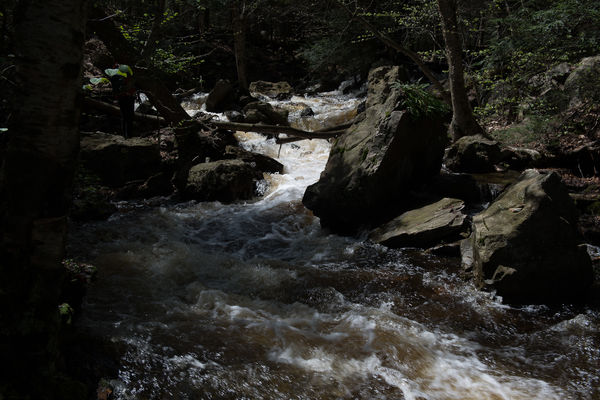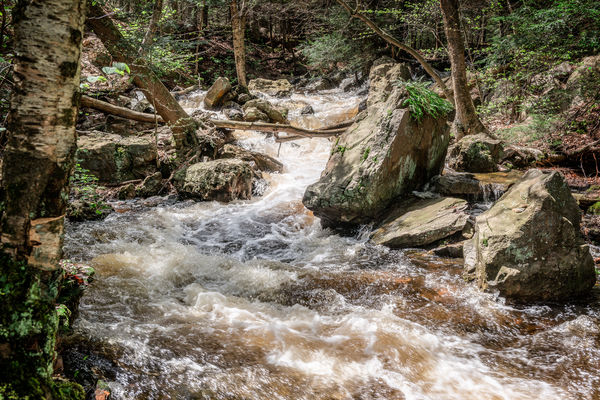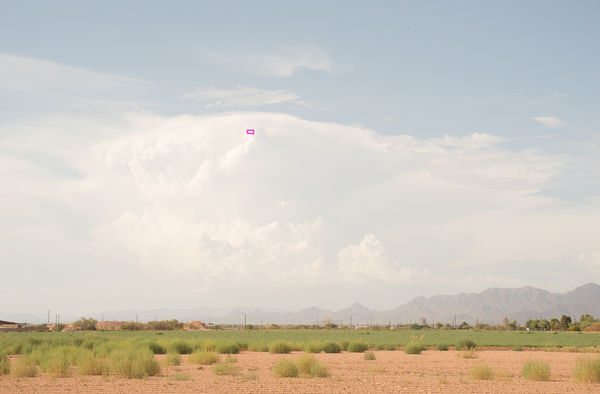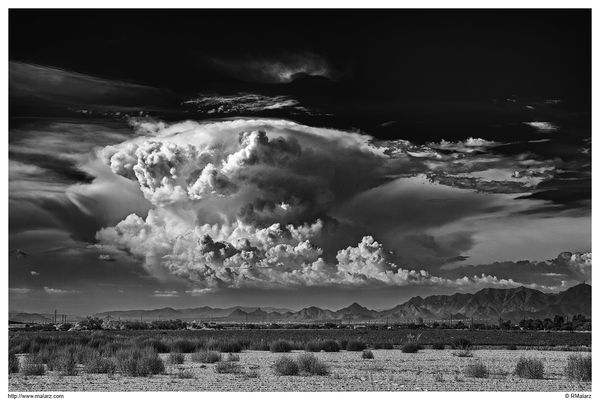Over exposing RAW for better dynamic range?
Mar 19, 2019 13:50:06 #
I noticed that my meter not always covers the available dynamic range.
What do you think of increasing by up to f-2 stops (of lowering speed) in order to use the full 14 bits of range ?
Of course this will deliver an overexposed jpg but when RAW processed in post, ends in lower noise and nicer end results.
Let me know if you ever tried and/ or my experience is not technically sustainable.
Thank you all.
What do you think of increasing by up to f-2 stops (of lowering speed) in order to use the full 14 bits of range ?
Of course this will deliver an overexposed jpg but when RAW processed in post, ends in lower noise and nicer end results.
Let me know if you ever tried and/ or my experience is not technically sustainable.
Thank you all.
Mar 19, 2019 13:55:31 #
This is referred to as exposing to the right (of the histogram) - ETTR for short. If you do a search for ETTR you'll find it's been discussed extensively in UHH and elsewhere.
Mar 19, 2019 14:36:45 #
R.G. wrote:
This is referred to as exposing to the right (of the histogram) - ETTR for short. If you do a search for ETTR you'll find it's been discussed extensively in UHH and elsewhere.
There is also Exposing Beyond The Right - EBTR whch may gain you another stop or two, but you need to test your camera beforehand to see how much you can get away with.
Mar 19, 2019 14:44:09 #
carlospaz wrote:
I noticed that my meter not always covers the available dynamic range.
What do you think of increasing by up to f-2 stops (of lowering speed) in order to use the full 14 bits of range ?
Of course this will deliver an overexposed jpg but when RAW processed in post, ends in lower noise and nicer end results.
Let me know if you ever tried and/ or my experience is not technically sustainable.
Thank you all.
What do you think of increasing by up to f-2 stops (of lowering speed) in order to use the full 14 bits of range ?
Of course this will deliver an overexposed jpg but when RAW processed in post, ends in lower noise and nicer end results.
Let me know if you ever tried and/ or my experience is not technically sustainable.
Thank you all.
Try bracketing =- 2 stops and see what you like best.
Mar 20, 2019 06:36:37 #
david vt
Loc: Vermont
Search for posts on this topic by Chg_canon (I think I have that right). He practically posted a dissertation on ETTR. Great tutorial for you to learn if this would help you you get to what you want.
Mar 20, 2019 07:47:15 #
First off, it's not overexposure. If one overexposes, there will be image data that is lost. What one does is additional exposure. How much? That is determined by testing. Testing each camera, as to how much, that depends. Each camera is slightly different. I use this technique on almost every photograph I take.
--Bob
--Bob
carlospaz wrote:
I noticed that my meter not always covers the available dynamic range.
What do you think of increasing by up to f-2 stops (of lowering speed) in order to use the full 14 bits of range ?
Of course this will deliver an overexposed jpg but when RAW processed in post, ends in lower noise and nicer end results.
Let me know if you ever tried and/ or my experience is not technically sustainable.
Thank you all.
What do you think of increasing by up to f-2 stops (of lowering speed) in order to use the full 14 bits of range ?
Of course this will deliver an overexposed jpg but when RAW processed in post, ends in lower noise and nicer end results.
Let me know if you ever tried and/ or my experience is not technically sustainable.
Thank you all.
Mar 20, 2019 08:58:38 #
Exposing to the right, as explained by Bob simply means adding additional exposure to extend the dynamic range. Can also be done using several frames with different exposures and bringing them together with software to make a HDR photo.
Exposing to the right you want to make sure the highlights are not clipped. The exposure should not reach the extreme right but should be short of it for best results. RAW files work better.
Exposing to the right you want to make sure the highlights are not clipped. The exposure should not reach the extreme right but should be short of it for best results. RAW files work better.
Mar 20, 2019 09:37:39 #
GEG
Loc: Pennsylvania
ETTR is a great approach within 1 - 1 1/2 stops depending on your camera sensor’s ability to recover detail, but completely blown out areas will not be recovered, and it’s only necessary for images that have a lot of dynamic range (from black to white).
Mar 20, 2019 09:59:35 #
carlospaz wrote:
I noticed that my meter not always covers the available dynamic range.
What do you think of increasing by up to f-2 stops (of lowering speed) in order to use the full 14 bits of range ?
Of course this will deliver an overexposed jpg but when RAW processed in post, ends in lower noise and nicer end results.
Let me know if you ever tried and/ or my experience is not technically sustainable.
Thank you all.
What do you think of increasing by up to f-2 stops (of lowering speed) in order to use the full 14 bits of range ?
Of course this will deliver an overexposed jpg but when RAW processed in post, ends in lower noise and nicer end results.
Let me know if you ever tried and/ or my experience is not technically sustainable.
Thank you all.
It's important to note that not all images contain 14 stops of dynamic range.
That being said, the best way to leverage the dynamic range in your camera is a)shoot 14 bit lossless compress raw, b)use a wide gamut color space in your entire workflow, only converting to sRGB, 8 bit for output, and c)be very precise in your approach to metering. The best would be to use a separate hand-held 1° spot meter, but I find that the spot meter function is sufficient for 98% of the pictures I take. My approach is to first test the threshold of overexposure on the brightest highlights in an image. find a white house with shingles, a pattern or siding, and photograph the side that is in full sunlight. Read the highlight, and use the meter reading +1 stop as your initial exposure. Bracket your shots for more exposure at 1/3 stop intervals. When you have made 6 or so additional exposures, (+1.33, +1.67, +2, +2.33, +2.67, +3), open your raw conveter and see if you can recover highlight information from the brightest shot. If not, try the next lower exposure, and so on, until you reach one where you are satisfied with the amount of detail recovery. This will be your exposure setting for proper highlights. On my camera - D810 - at base ISO I can go +2 stops, and a little less when I boost the ISO higher.
For all intents and purposes, you should be able to get the best exposure possible using this method. It's not perfect, cameras have their limitations, but in terms of getting it right in the camera, it's a good approach that can be used in all situations. Some cameras, like Olympus, Sony and Nikon, now have a highlight protective spot meter mode built in.
.
unprocessed raw conversion

(Download)
processed for highlight retention, shadow recovery and overall exposure adjustment

(Download)
Mar 20, 2019 10:14:43 #
rmalarz wrote:
First off, it's not overexposure. If one overexposes, there will be image data that is lost. What one does is additional exposure. How much? That is determined by testing. Testing each camera, as to how much, that depends. Each camera is slightly different. I use this technique on almost every photograph I take.
--Bob
--Bob
Super impressive Black and White shot.
To the OP, the theory of ISO invariance has obsoleted "expose to the right" for me.
Mar 20, 2019 10:22:22 #
catchlight..
Loc: Wisconsin USA- Halden Norway
carlospaz wrote:
I noticed that my meter not always covers the available dynamic range.
What do you think of increasing by up to f-2 stops (of lowering speed) in order to use the full 14 bits of range ?
Of course this will deliver an overexposed jpg but when RAW processed in post, ends in lower noise and nicer end results.
Let me know if you ever tried and/ or my experience is not technically sustainable.
Thank you all.
What do you think of increasing by up to f-2 stops (of lowering speed) in order to use the full 14 bits of range ?
Of course this will deliver an overexposed jpg but when RAW processed in post, ends in lower noise and nicer end results.
Let me know if you ever tried and/ or my experience is not technically sustainable.
Thank you all.
Don't buy into this idea...
This will be a 50 page rant for sure... better yet is to bracket and take advantage of today's post possessing tools.
Exposing to the right has little value with digital sensors today. This is a old Film day practice.
The advancements camera manufactures have made over the last decade showcase the idea.
5 to 7 stops of adjustment are available for most sensor images that you post possess. you wont get that benefit if you push to the right and blow the highlights.
Mar 20, 2019 10:41:01 #
[quote=catchlight..]
5 to 7 stops of adjustment are available for most sensor images that you post possess. you wont get that benefit if you push to the right and blow the highlights.
IF, you have tested your camera and know how far you can "expose to the right" there is zero reason to blow out the hi-lights. Getting the most out of your equipment is not a sin but to get that you first have learn your gear. Just going along with the manufacturers specs means you are not getting the most you can and you could be leaving money on the table.
"5 to 7 seven stops of adjustment" you will not know which it is unless you test and you might find you have more(or less).
5 to 7 stops of adjustment are available for most sensor images that you post possess. you wont get that benefit if you push to the right and blow the highlights.
IF, you have tested your camera and know how far you can "expose to the right" there is zero reason to blow out the hi-lights. Getting the most out of your equipment is not a sin but to get that you first have learn your gear. Just going along with the manufacturers specs means you are not getting the most you can and you could be leaving money on the table.
"5 to 7 seven stops of adjustment" you will not know which it is unless you test and you might find you have more(or less).
Mar 20, 2019 11:23:48 #
catchlight..
Loc: Wisconsin USA- Halden Norway
[quote=Rich1939]
The examples posted have blown Highlights.
Detail in the shadows is most important in sensor development today when dealing with Dynamic range.
catchlight.. wrote:
br br 5 to 7 stops of adjustment are available f... (show quote)
The examples posted have blown Highlights.
Detail in the shadows is most important in sensor development today when dealing with Dynamic range.
Mar 20, 2019 11:26:04 #
Quite true Rich. Turn the camera highlight warning on and before long you get the blinkies telling you that you’ve overexposed your picture as you up the exposure. However when you open your files in the raw converter (I use adobe ACR) you find you’ve invariably not over exposed and blown the highlights at all. You need to test your camera to find out how far to the right you can expose before you actually do blow the highlights according to your raw converter.
Mar 20, 2019 11:29:52 #
catchlight.. wrote:
The examples posted have blown Highlights.
Detail in the shadows is most important in sensor development today when dealing with Dynamic range.
Detail in the shadows is most important in sensor development today when dealing with Dynamic range.
Really ?? care to tell us where?
For the record, when you expose to the right you also help save shadow detail
If you want to reply, then register here. Registration is free and your account is created instantly, so you can post right away.








